-
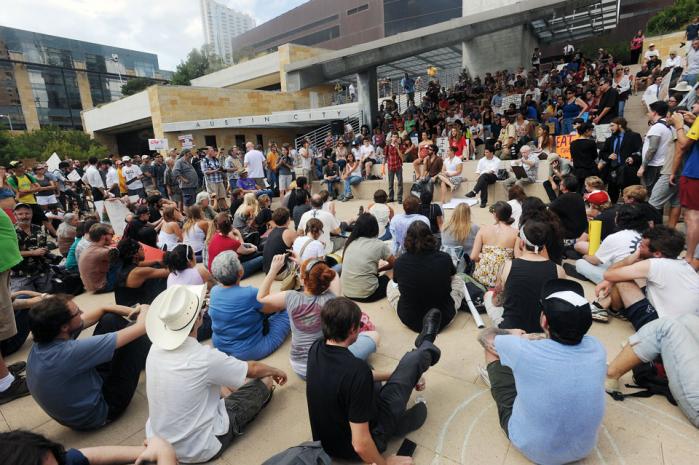
1.) Occupy Austin gathers at City Hall plaza on October 6, 2011, for the first day of its occupation.
-
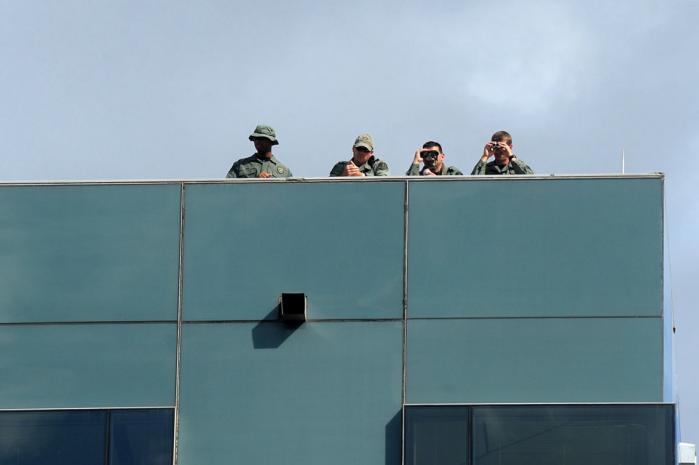
2.) Members of the Austin Police Department SWAT team watch over Occupy Austin on the first day of City Hall occupation on October 6, 2011.
-
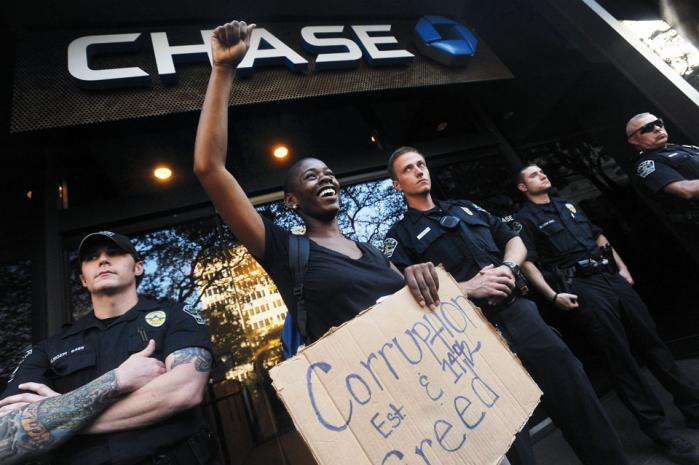
3.) Rally in front of Chase Bank in downtown Austin on October 10, 2011.
-
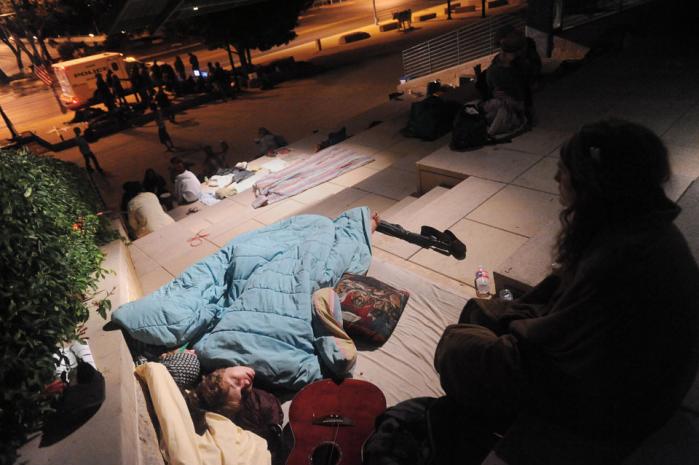
4.) Occupy Austin participants at City Hall wait for a planned cleaning in the early morning hours of October 14, 2011. The cleanings usually took place between the hours of 10 p.m. and 2 a.m. with little notice. To clean the plaza, those camping had to move the entire encampment to one side of the plaza and then back again. On this night, the cleaning was eventually called off and the participants did not have to move.
-
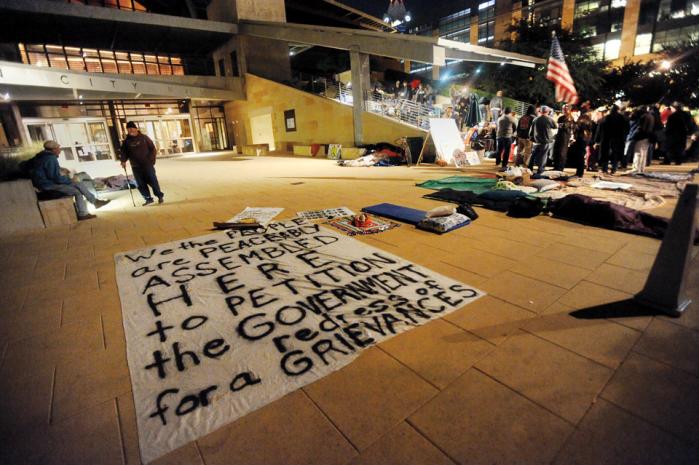
5.) Occupy Austin gathers in the early morning hours of October 30, 2011. Earlier in the evening, several arrests took place over serving food without a permit. As a result, some participants decided they would refuse to move for the scheduled city cleaning as an act of civil disobedience.
-

6.) Police officers arrest Occupy Austin participants who refused to move for a cleaning on October 30, 2011. By the end of the sit-in, police had arrested 38 people for criminal trespassing.
-
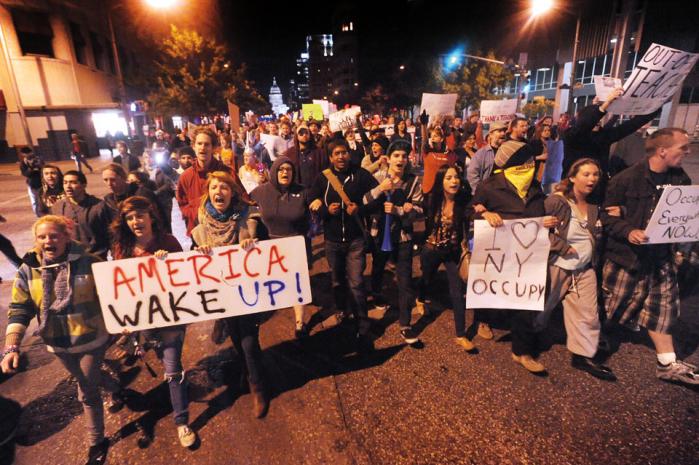
7.) Occupy Austin marches down Congress Avenue in downtown Austin on November 17, 2011.
-
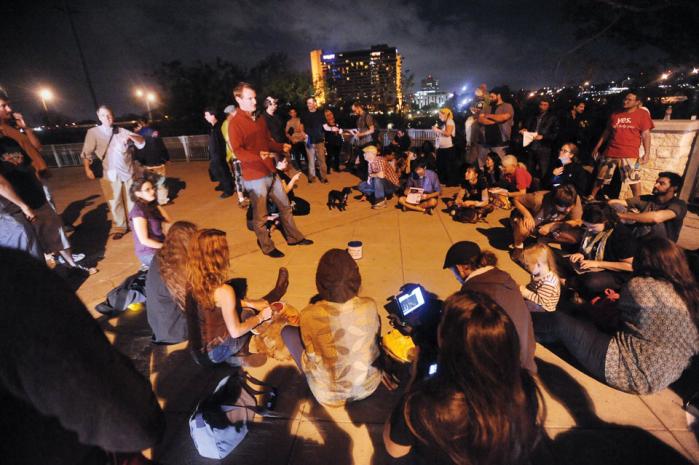
8.) General Assembly at Buford Tower, November 21, 2011. The group meets at this location, a few blocks from City Hall, after those arrested were banned from City Hall grounds.
-
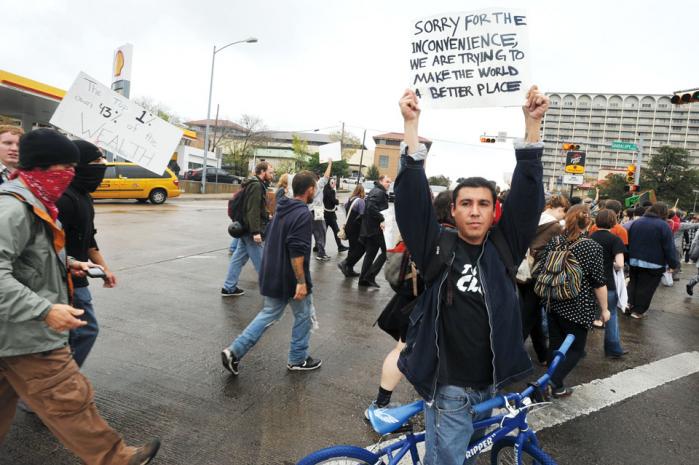
9.) Occupy Austin marches on Chase and Wells Fargo banks located on “The Drag” across from The University of Texas, December 3, 2011. Undercover Austin police officers Shannon Dowell and Rick Reza (left, wearing masks) join the march.
-
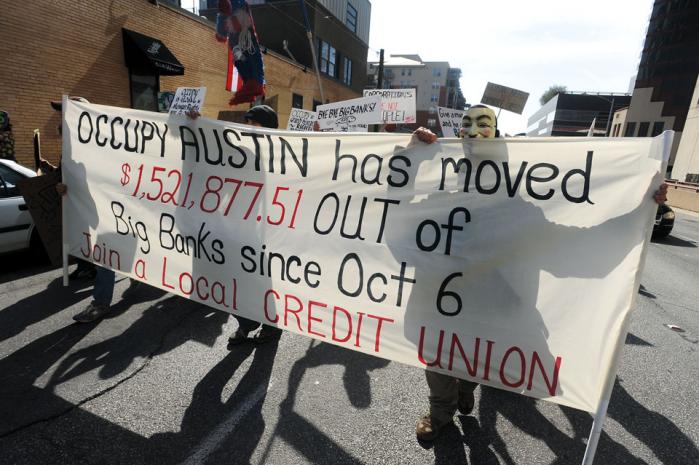
10.) Marching through downtown Austin for a Bank Action Day on January 21, 2012, the anniversary of the U.S. Supreme Court’s decision in Citizens United v. Federal Election Commission. Occupy Austin’s Bank Action Working Group encouraged community members to move their money from Wall Street banks to local banks and credit unions.
-
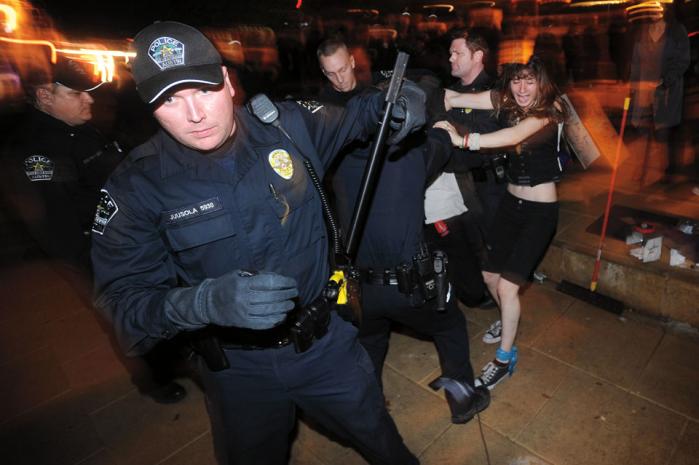
11.) Police officers arrest participants during the eviction from City Hall on February 3, 2012. At 9:45 p.m. on February 3, 2012, the city manager’s office gave Occupy Austin notice that a new curfew of 10 p.m. had been established and the group had to leave City Hall that night. Soon after, the police started evicting the group and removing their encampment.
-
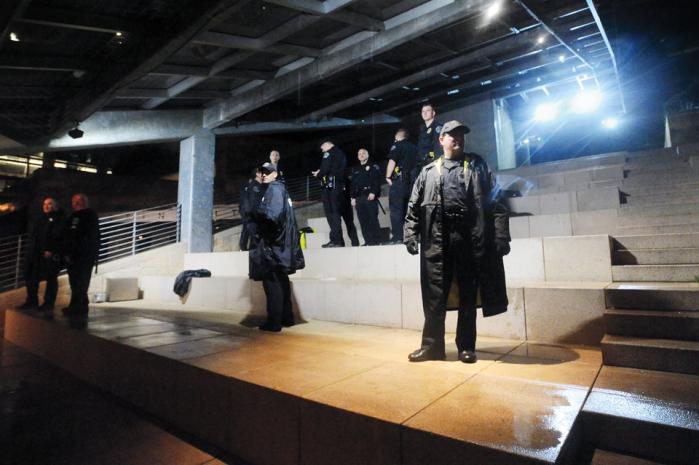
12.) Police officers guard City Hall plaza steps after evicting Occupy Austin on February 3, 2012.
-
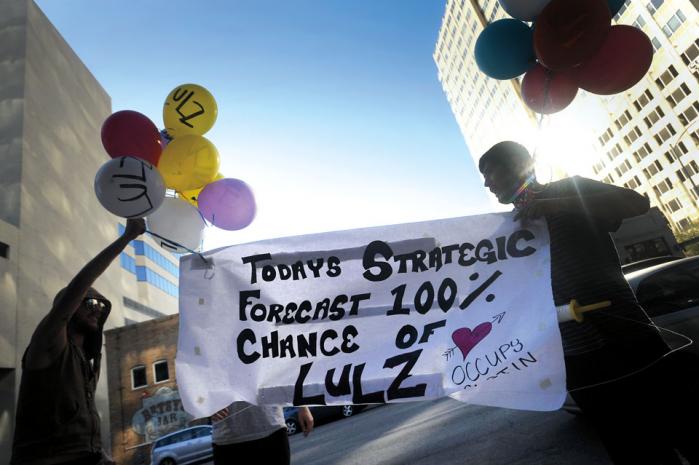
13.) Participants with Occupy Austin float signs outside the windows of the private global intelligence company Stratfor on March 5, 2012. Stratfor emails obtained through computer hacking and eventually released by Wikileaks, revealed the Texas Department of Public Safety was monitoring Occupy Austin with an undercover agent who shared information about the group’s activities with Stratfor.
-
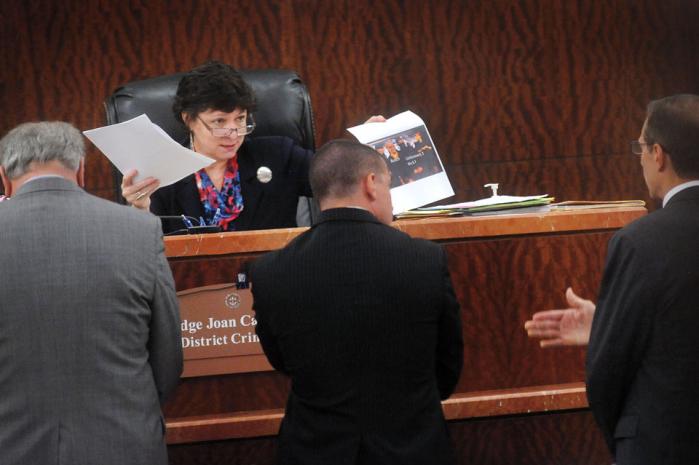
14.) Harris County Judge Joan Campbell holds up a photo of APD undercover officers while speaking with attorneys during a pre-trial hearing in Houston, Texas, September 5, 2012.
-
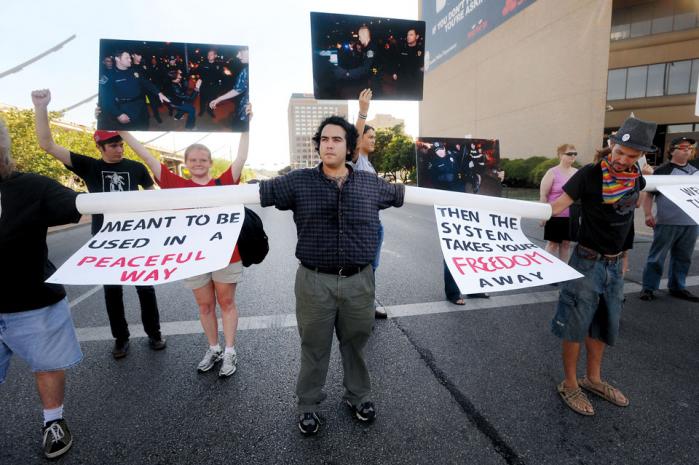
15.) Gulf Port 7 defendant Ronnie Garza (center) and Occupy Austin participants rally outside Austin Police Department headquarters to protest the APD’s infiltration, September 5, 2012.
"In Search of a Revolution: Occupy Austin in Photographs and Text" documents the activities of Occupy Austin, which participated in the international movement created by Occupy Wall Street. The book is presented chronologically and begins with the first day of the occupiers' encampment at Austin City Hall. It includes photographs of marches, arrests, assemblies, court trials, the camp itself and even law enforcement infiltration. Digital copies of the book are also available in iBook and PDF formats at activepresspub.com.
On December 12, 2011, a group of 16 people, including some with Occupy Austin, were arrested at the Port of Houston for blocking an entrance. Although most of the group was charged with misdemeanors, seven of the participants were charged with felonies for using PVC tubes to lock arms. They became known as the Gulf Port 7.
During the trial, a subpoena revealed that Austin Police Department's undercover officers had infiltrated Occupy Austin with up to six officers before the group established a camp at City Hall. It was also revealed that three of the undercover officers provided the tubes that raised the charges to felonies. The trial ended after the prosecutor lowered the charges to misdemeanors.
3 WAYS TO SHOW YOUR SUPPORT
- Log in to post comments











